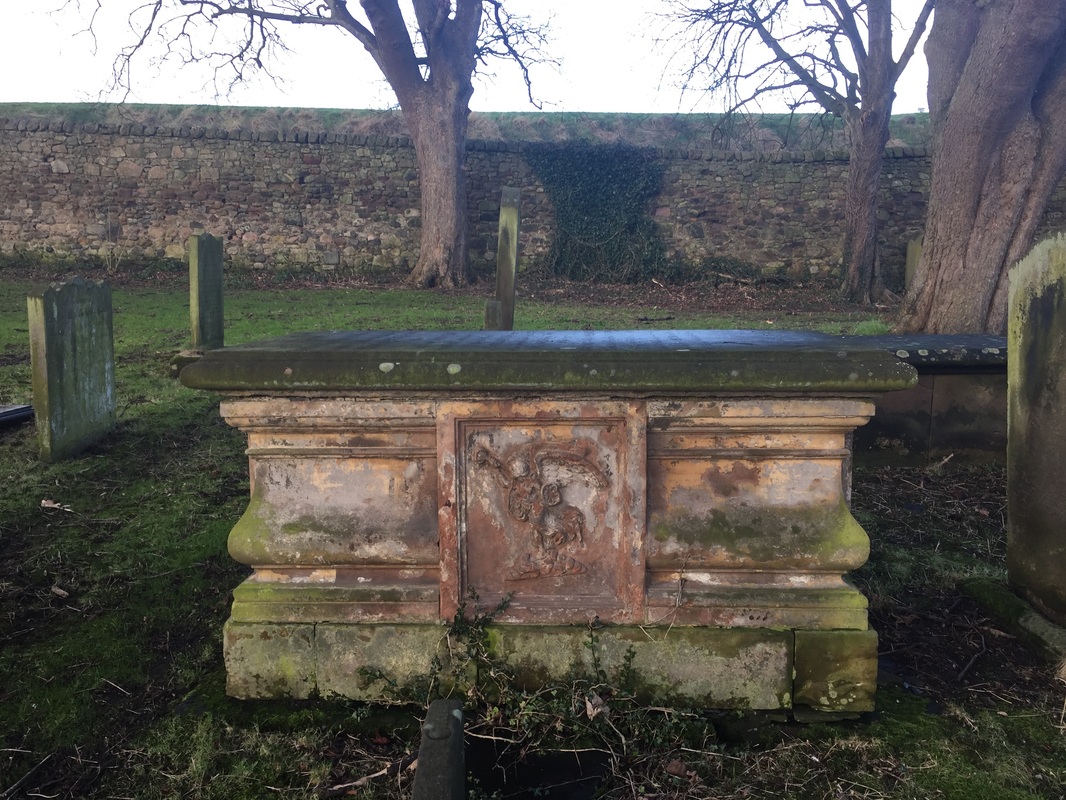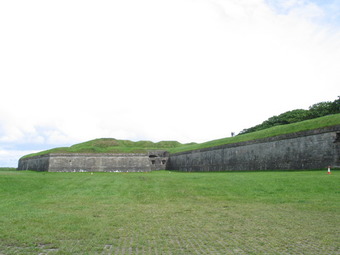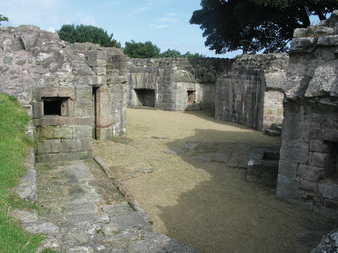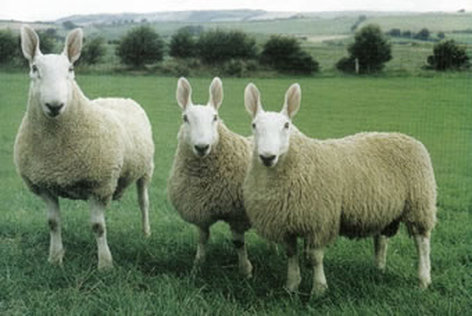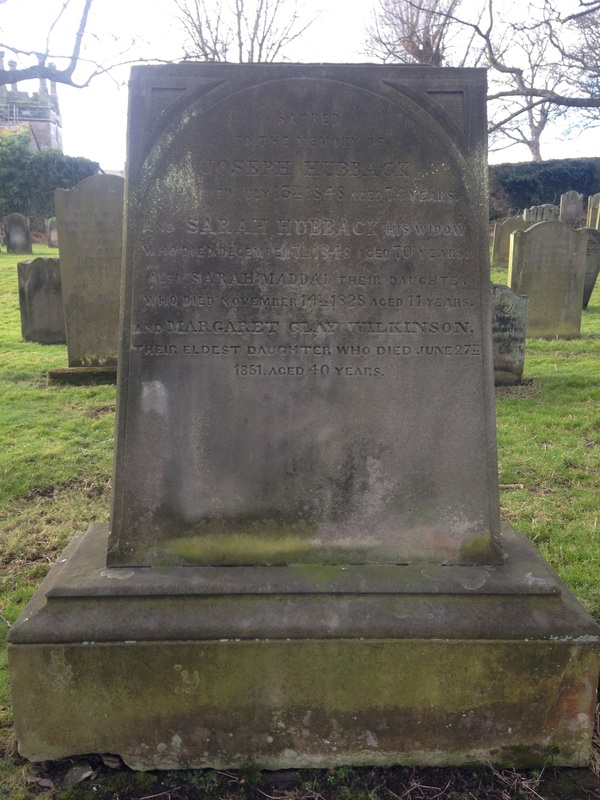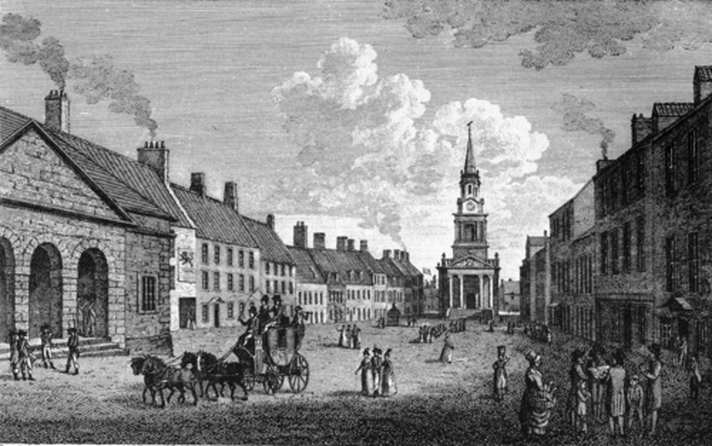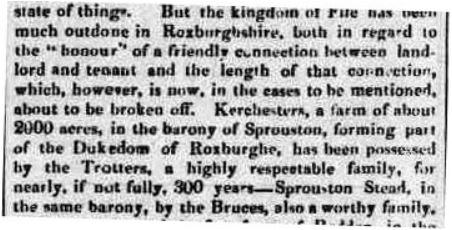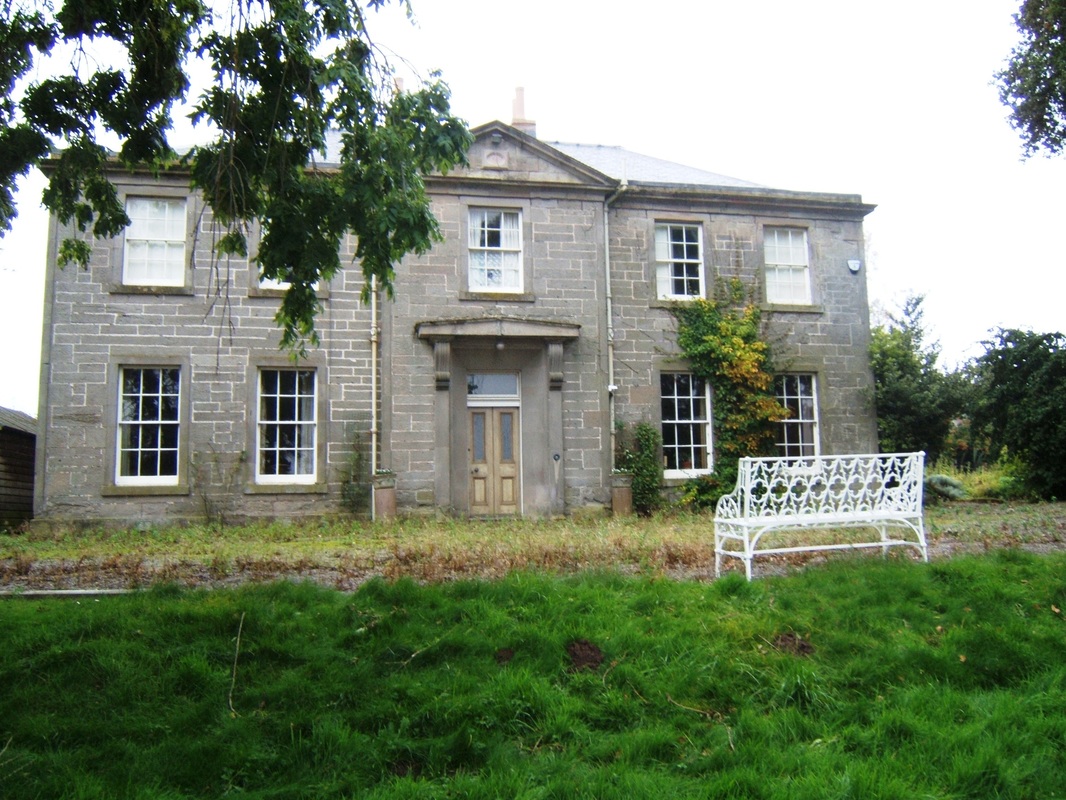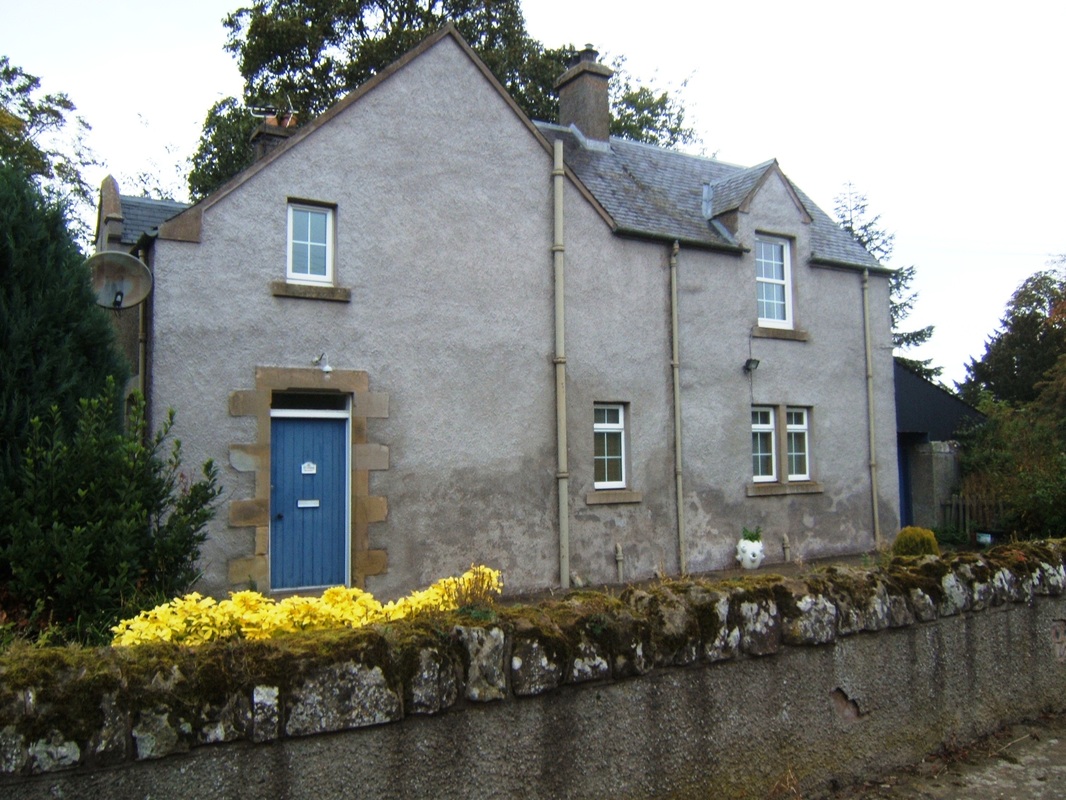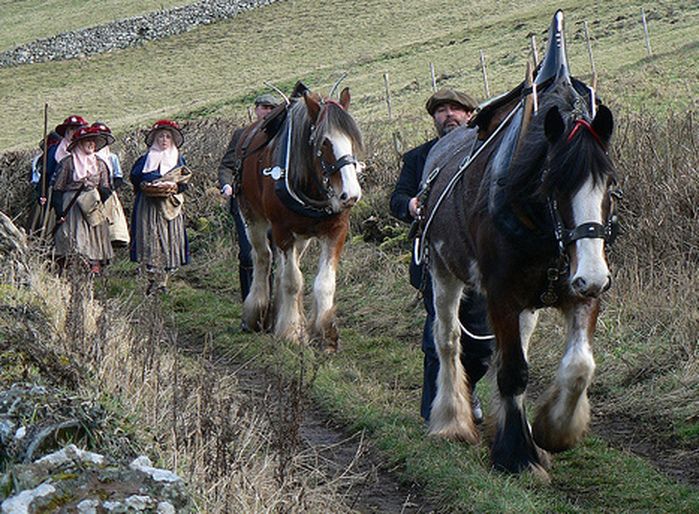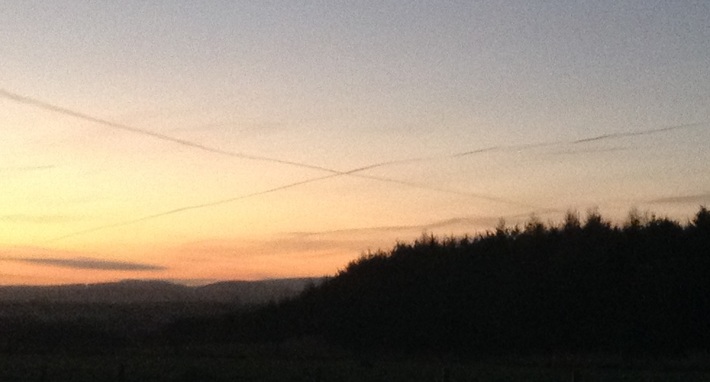IntroductionThis month I have decided to feature a diary extract from 1878 to illustrate how such oddments of information can provide a rich source of information to the family as well as the local historian. The extract is packed with evidence relating to places, people and the economy of Berwick and the Scottish Border country in the mid Victorian period. The colour and character it contains is highly evocative of this bygone era and extremely useful as a base for further research. It has been taken from the "Accounts of Berwick, Kerchesters, Plenderleith by Archie Simpson (aged 19) visiting the Borders from Australia". Archie was the grandson of Joseph Hubback and Sarah nee Clay of Berwick upon Tweed, (who featured in an early post http://www.bordersancestry.co.uk/blog/hubback-the-hatters-of-hexham). His mother had married Reverend Archibald Simpson of Edinburgh who after their marriage emigrated to Australia in the early 1850’s. Reverend Simpson was a Free Church Minister at the Leigh Church, Shelford, Geelong, Victoria. Below is a brief outline illustrating Archie’s connection to the Clay family. Not all relations are shown by any means, it is merely intended as a guide to help you navigate the people mentioned in the extract with the main characters highlighted in red. After each daily entry I have added some notes and thoughts about the people and the information it contains. Wednesday 8th May 1878 Miss Clay was Sarah Clay born in Berwick in June 1799 so by the time of Archie’s visit in 1878, she was indeed an old lady, and her infirmity is indicated by her inability to come downstairs to dinner. She died in Berwick in February 1880 and is buried at Holy Trinity with her brother William his wife Jessie Young and parents John Clay and Johanna nee Grieve. Sarah was a first cousin to Archie’s mother Jane Elizabeth Hubback despite being 23 years her senior. The John Clay of Ravensdown in Berwick was a Corn Merchant and nephew of Sarah Clay above being the son of her brother Patrick Clay. He died aged just 49 in January 1880 due to ‘General Paralysis of the Insane’ otherwise known as syphilis. It is unknown whether this was contracted or a congenital disorder which afflicted many families at this time, regardless of social status. Alas, the condition often proved fatal as the only known cure, penicillin was not discovered until 1923, and not used to treat infection in people until 1942. This entry also includes some interesting information regarding the layout of the house. The drawing room is evidently upstairs, which was often the case at the time in more affluent homes, whilst the dining room is down. The walls to which Archie refers are the Elizabethan fortifications which continue to delight visitors today, and of course the Tweed remain synonymous with Salmon! The train journey from Waverley to Berwick at one hour fifteen minutes, roughly only half an hour longer than today and at an equivalent of £11.47 in today’s money it compares favourably with current fares. Berwick railway station undoubtedly stands on the site of Berwick Castle but not directly on top of the Great Hall as is often thought; that was where the Network Rail yard is now. The idea that the castle was demolished to make way for the railway is rather over simplified. My friend and colleague Jim Herbert of Berwick Time Lines as written an interesting article on the subject at: http://berwicktimelines.tumblr.com/post/57692566209/berwick-castle-part-i-structure Thursday Needless to say Miss Clay’s relatives would most likely have been his own too. The J Clay with whom Archie lunches and attends a farm sale at Beal is John Clay of Kerchesters, a cousin to John Clay the corn merchant. In this entry we are transported back to age of steam and the vital transport links it provided to small rural communities. Beal station whilst on the main inter-city line was closed to passengers in 1967. The website http://www.disused-stations.org.uk/b/beal/ provides a detailed description of how Beal station looked in its hey-day. From further research in the newspapers it appears the stock sale undertaken by Messrs Embleton and Son was a dispersal of the stock and farm implements of the outgoing tenant, Mr David Wright of Beal Farm. The subsequent sale report details not only the prices achieved but also the purchasers and where they lived at the time. An extremely useful resource for the inter-census periods for those looking for farming ancestors, holding clues for further research in largely un-digitised land and taxation records. It is also interesting from the point of view of the breeds of animals on offer. The sheep were Border Leicesters, a breed championed and introduced to Northumberland by the famous ‘Culley Brothers’, George and Matthew, with tups from the pre-eminent breeder of the time Lord Polwarth of Mertoun. Amongst the entries in the machinery section; a portable threshing machine, an artificial manure distributor; 2 corn drills and a sheep dipping machine! Interestingly: “The world's first sheep dip was invented and produced by George Wilson of Coldstream, Scotland in 1830. That dip was based on arsenic powder and was exported by package steamer from nearby Berwick-upon-Tweed”. http://www.borderleicesters.co.uk/border-leicester-sheep.php The Hendersons of the piece are explained by Archie himself. The Robertsons were the owners of an iron foundry in Tweedmouth. Alexander Robertson, the ‘old Mr Robertson’ referred to above above was also Freeman and a JP who presented Berwick Freeman’s Guild with a new ‘Oldest Freeman’s Stick’ in 1889 to replace one of some antiquity which had been lost. Their son, Alexander Tower Robertson would himself become the recipient of the ‘stick’ in 1946. http://www.freemenofberwick.org.uk/appendix.html Quite how old Mr Robertson new ‘Burma’ is not known, but he evidently liked to talk about it! Friday 10th May The grave he visited was that of his grandparents and aunts in Holy Trinity churchyard, however I have been unable to find a monument to Joseph Hubback within the church itself. The ‘Old Bridge’ to which Archie refers was in use from circa 1622 but not completed until 1633. The railway bridge or ‘Royal Border Bridge’ was opened by Queen Victoria in 1850 and with 14 and 28 arches respectively they are both mighty fine bridges indeed. Needless to say neither of them actually spans the border between England and Scotland. Uncle Tom, was Thomas Hubback who died in 1872, at ‘No 1, Berwick’ having been predeceased by his wife Jane Brodie. They are both interred in Sprouston Chruchyard. Sarah Clay’s companion Miss Brodie may well be Jane Brodie’s unmarried sister Janet, who nursed Jane through her illness, and was left an annuity of £20 per annum by Thomas Hubbacks will. The shop to which Archie refers is highly likely to be No 32 Marygate (High St) and home to the Berwick Museum, combined with the Literary and Scientific Institute, from 1872. Being no longer adequate for purpose the old premises was demolished and replaced by a new purpose built building. (See research by Jim Herbert) Archie was also incorrect to state that his parents were married there, when in fact they married in the Parish Church. Whilst marriage, by a Minister in the bride’s home was legal and commonplace over the Border in Scotland, in England to be legal a marriage ceremony had to be conducted within a Church (and the relevant taxes paid of course!). Prior to the Clays entry in 1839 the Trotter family had farmed Kerchesters for approximately 300 years as this extract from the Perthshire Courier - Thursday 08 November 1838 stands testimony. If correct, I find it incredible to think this was a mere 23 years or so after the Battle of Flodden in 1513, and was still being subjected to problems of Border skirmishes. The farmhouse that stands today was built for John Clay, the Trotters occupying a much humbler abode at the farm entrance which is now referred to as the Stewards House. It is interesting to note the improvements being made to land drainage on the farm. Mr Clay’s father was quite vocal on his views of the land improvement policies adopted by the Trotters, or more accurately the lack of them. The Miss Thomsons referred to are daughters of John Turnbull Thomson, brother to Mrs Patrica Clay (nee Thomson) at that time Surveyor General of New Zealand, who was also a talented artist. He was no doubt introduced to New Zealand and the Far East through his connections with another eminent Borders family - the Browns of Longformacus and Penang. On his retirement in 1880 he built a house called ‘Lennel’ in Invercargill designed around his childhood home of Glororum in Northumberland. The fifth of his nine daughters Jacobina married her cousin Alexander Thomson Clay, son of John Clay of Kerchesters in 1890. http://www.teara.govt.nz/en/biographies/1t97/thomson-john-turnbull Alas, I have been unable to find more about the Porter with the wooden leg, but details like this when combined with kerosene lamps and candles add atmosphere and depth. It also infers that the middle class homes of Berwick were lit by gas. This gas was unlike the natural gas we have today, but rather came from baked coal which left black deposits, starved rooms of oxygen and had a propensity to explode! Saturday 11th This entry provides an overview of the farming practices, the stock carried on the farm and what it was fed. In 1797 the Farm Horse Tax states George Trotter had 18 horses at Kerchesters. The rise to 25 in constant work in 1878 would suggest more land under the plough than previously. The size of the workforce illustrates the importance of the agricultural industry as an employer in a rural economy. The female employees may well have included ‘Bondagers’, a system particular to South East Scotland and Northumberland, which by this time although in decline continued to be practised well into the 20th century. Dinah Iredale explains all in her book ‘The Forgotten Workers’ and a little taster can be found here: http://www.bordersancestry.co.uk/blog/the-forgotten-workers-by-dinah-iredale The sheep on offer at Elsdon Burn sale were ‘Cheviots’, the ewes were often crossed with a Border Leicester tup for hybrid vigour and created the ‘Half Bred’. The resulting female offspring was prized for the mothering ability inherited from their hill bred dams. The Mr Borthwick of the piece was Charles Borthwick another relation of John Clay, his wife Janet nee Thomson was a sister of Mrs Clay. Charles Borthwick’s son John Alexander of Oxnam Row, Jedburgh was subsequently a named trustee in the will of John Clay in 1904. Mr Logan of Mt Elephant in Australia was also obviously descended from ‘Border’ stock, as was possibly Isabella Baird. All useful snippets for those trying to trace their ancestral roots. For me, however, the lasting impression has to be Archie’s account of the storm, the wind whipped tent and helping the shepherds to pen the sheep in order to ‘keep a little warm’! His phonetic quotation of the local’s opinion on the weather is a lovely touch. As so often happens after a raging storm, the atmosphere clears to leave a beautiful clear sky and in Archie's experience, a bright moonlit night. ConclusionEven if a diary or letter does not relate directly to your own ancestors it may still provide some excellent background information about the people, and economy of a certain place at a given point in time. Records such as these can hold many clues to form the basis of further research. With so many to choose from this may take several directions, which path will you take? NOTES RE THE BERWICK MUSEUM by Jim Herbert. It was Dr Johnston who tried to set up the first museum for the Highland meeting in 1841, but nobody would pay for the showcases. So it was appropriate that when the Museum was finally established by members of the Berwickshire Naturalists Club in 1867 it was based around his collections and for many years was devoted exclusively to natural history. You can read more from Jim at http://berwicktimelines.tumblr.com
5 Comments
31/1/2016 07:33:28 am
What an interesting story and very easy to read, thank you!
Reply
2/2/2016 01:06:18 pm
my Laidlaw ancestors came from the Borders my 6th gr grand parents were William Laidlaw[ known as Will O' PHAUP] ANDHIS WIFE Bessie Scott who lived in Ettrick.
Reply
2/2/2016 10:23:49 pm
How fascinating! I love reading about this area during this time. I have my Great Great Grandma's diary from 1872 and 1879 and she and her family also lived in the borders area. I love learning anything I can and connecting the dots from her diary to the people that lived there at that time. Thanks for sharing!
Reply
NICOLA KINGSTON
26/8/2021 12:03:06 am
How interesting! My grandfather was Rev Patrick Clay, and he was from Berwick and was the son of John Clay and Jean Cruickshank Henderson.
Reply
Leave a Reply. |
AuthorSusie Douglas Archives
August 2022
Categories |
Copyright © 2013 Borders Ancestry
Borders Ancestry is registered with the Information Commissioner's Office No ZA226102 https://ico.org.uk. Read our Privacy Policy


